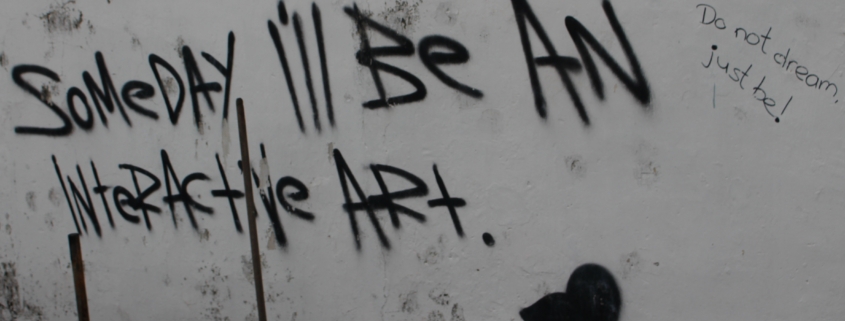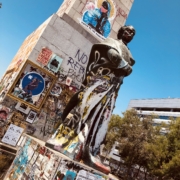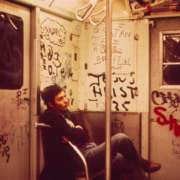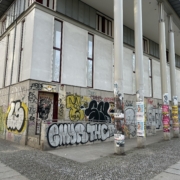On the possibilities of interactive graffiti and street art
From culinary practices to painting, over time the work that creative people and organizations produce, not to mention the context in which it is made, changes. How does this happen?
Actors, artists, chefs, musicians, etc. integrate new ideas and perspectives in to their practice, experiment with different techniques, and practitioners enter and exit the creative game.
The field of contemporary graffiti and street art is no different. Since the late 1960s graffiti writers and street artists have experimented with new markers, paints, materials, etc. and they have applied their work on an increasingly diverse array of public surfaces. Some of this signage involves the integration or adoption of new technologies.
For example social media websites like Facebook, Instagram, Twitter, and YouTube have subtly effected how some graffiti writers and street artists practice their craft. No longer are graffiti and street art images and messages simply ephemeral (i.e., here today and gone tomorrow), but they can be seen anywhere (throughout the world) by anyone who has access to the internet, almost in perpetuity. At the very least, social media has extended the concepts of “all city” or “all country” to the field of graffiti.
Currently selected members of the graffiti and street art community are experimenting with creating and selling their work through Non-fungible Tokens (NFTs). As the relationship between graffiti and street art and NFTs gets clarified, we are bound to notice subtle shifts in the way graffiti and street art is created and the reasons why people may are attracted to this medium.
Also important have the been the brief experiments with the use of drones as a technique to apply graffiti on surfaces.
One of the areas that graffiti and street art, and selected types of visual art have struggled with, however, is the static nature of the medium. In general, unlike a mobile, graffiti and street art does not move nor respond to its immediate environment, including its audience.
Although this begs the question should graffiti and street art respond to direct (and nonstructural – like a nearby building) external influences, and if so, in what manner, how so, and how long?
Nevertheless, we have some clues with respect to how graffiti and street art may be developed to enable it to be more interactive and respond to its immediate surroundings.
Over the past few years a number of companies have pioneered digital graffiti. Currently a handful of vendors rent air graffiti walls, which primarily consist of interactive computer vision systems that are used at events and parties. Guests or party goers are given devices that resemble spray cans, that emit a low level LED. When activated the light sensor in the can is recognized by a large digital screen, which enables users to create simulated electronic graffiti walls. Although this kind of exercise looks like a fun activity, it is at the periphery of what we commonly consider graffiti and street art to be.
Similarly there are a number of individuals and organizations that are pioneering interactive wall and floor projections or video and sound immersive art installations. These are available in selected museums like ARTECHOUSE in Washington DC. Unlike most graffiti and street art, however, this requires a place (and surface) where permission is granted and the technology is quite costly.
Finally an alternative system relies upon a mobile phone “coupled with the emerging pervasive technology of Radio Frequency Identification (RFID).” This allows people who use this system to post messages on designated spots from remote locations.
Although this technology is interesting and important, the system and process that has yet to be built, however, would enable the creator and audience to directly and quickly interact and engage with an existing piece of graffiti or street art. And this interaction might also enable these constituencies to produce subtle shifts in the piece. This co-productive technology would also need to be relatively cheap for both the practitioner using it, and the audience responding. Moreover it would also need to be light and portable so that it could be placed somewhere relatively quickly to enable the practitioner to protect their anonymity.
When this technology gets paired with graffiti and street art the possibilities for real time interaction, creativity, and engagement will be awesome.
Photo Credit: Mike Gifford
Someday I’ll Be An Interactive Art.
Do not dream, just be!












